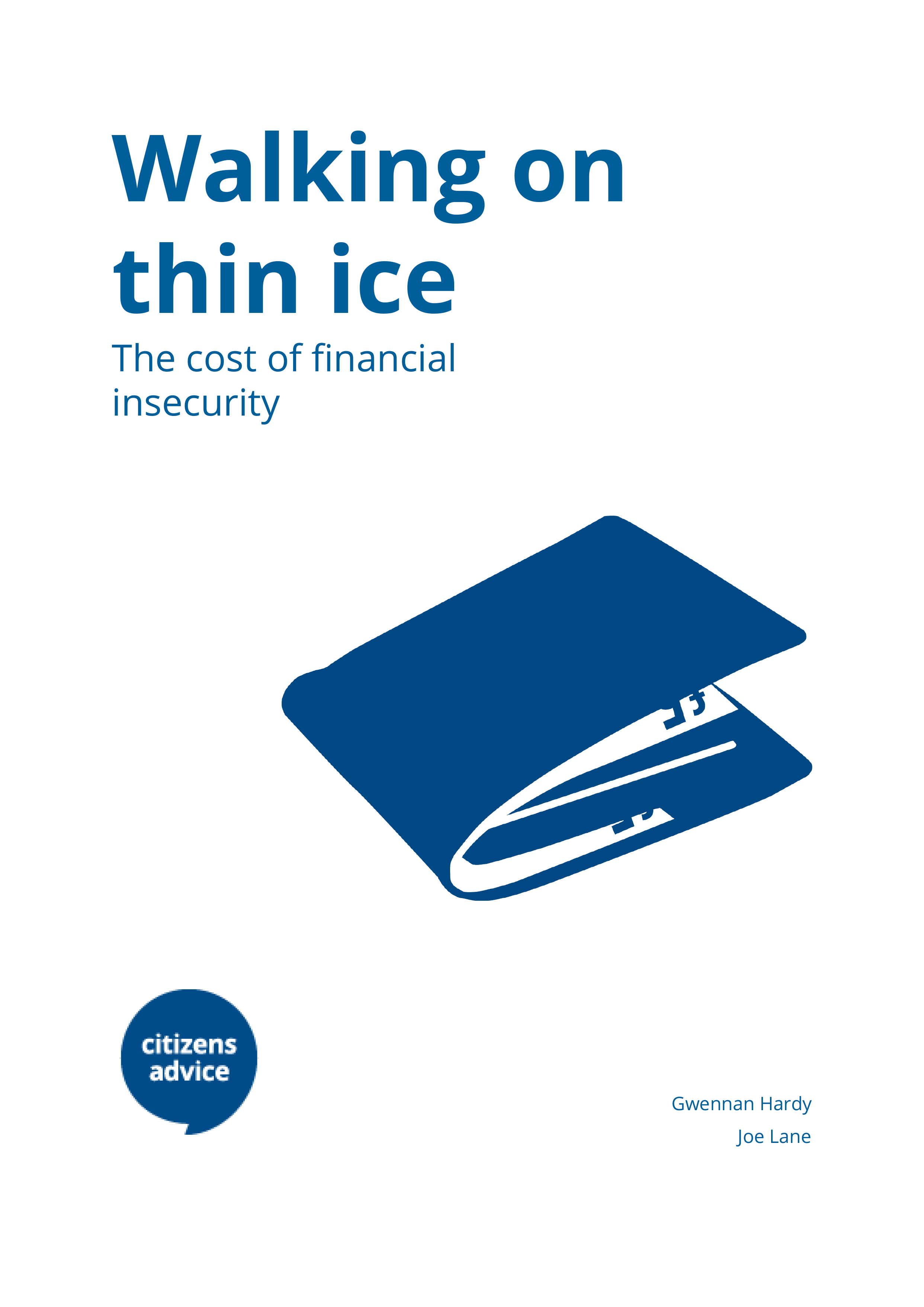Walking on Thin Ice: The cost of financial insecurity
Walking on Thin Ice: The cost of financial insecurity 1.17 MB - a new report from Citizens Advice shows that people's finances are increasingly vulnerable to changes in income and unexpected expenses. An infographic summary 1.07 MB is also available.
The decade since the financial crisis has left large numbers of households financially insecure.
Financial insecurity is driven by two things. First, people’s finances are unpredictable. More than 1 in 10 (13%) UK adults say their income changes significantly from month to month. Almost half (48%) said they experienced at least one monthly drop in income last year, with an average largest fall of £385. While the recent growth of insecure work may be making people’s incomes more volatile, to some extent unpredictable finances are inevitable - a result of unexpected expenses and major life events as well as changes at work.

Second, large numbers of people are poorly placed to manage that unpredictability - they’re not financially resilient. Household saving is at a near-record low, meaning that many people have little or no financial buffer when things go wrong. Family budgets are stretched, with nearly 1 in 10 (9%) of households spending at least 80% of their income on essentials like food, housing and fuel. Finally, household debt is rising and 2.9 million households are struggling to make payments.
Managing money in this context is hard. Many households find it difficult to respond to fluctuating budgets. This is rarely for want of trying - people with unpredictable incomes are more likely than those with stable incomes to have drawn up a budget or a spending plan.
But for families living in severe financial insecurity, managing money can feel like walking a tightrope. It means making difficult decisions about what to prioritise and what to give up. 1 in 5 (21%) people with unpredictable incomes have gone without food or essentials in the past year (compared with 8% with stable incomes).
For some, it means having to borrow to get by. Borrowing can be a lifeline for households with insecure finances. A quarter (25%) of people with volatile incomes used an overdraft to pay for essential costs like food, utilities or rent in the 12 months, compared with only 10% of people with stable incomes.
But relying on credit comes with its own risks, particularly for those who can't predict what their next paycheck will be. With high rates of interest and expensive default charges, far from helping people to gain greater financial stability, credit products often punish people for insecurity.
There is no easy solution to financial insecurity. Three approaches would help:
Make sure credit products don’t push people into unmanageable debt. The FCA should build on the success of the total cost cap on payday lending by extending a similar cost cap to other types of high-cost credit.
Provide alternative borrowing options for those who can’t borrow affordably from commercial providers. The government should ensure that credit is available for people where the market can’t cater for them.
Help people build a savings buffer. The government should review how it supports non-pension saving and concentrate its resources on helping people with no savings.